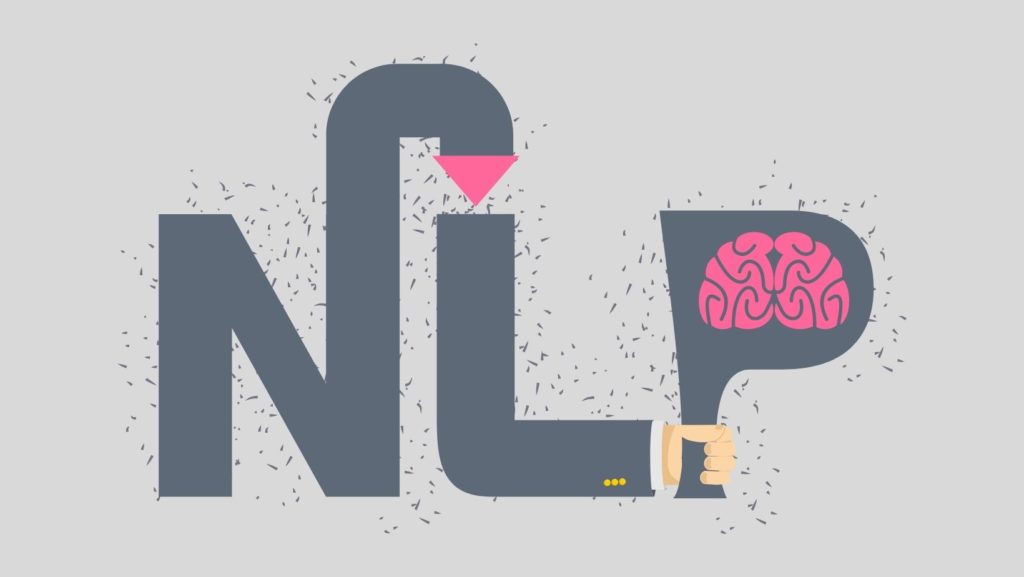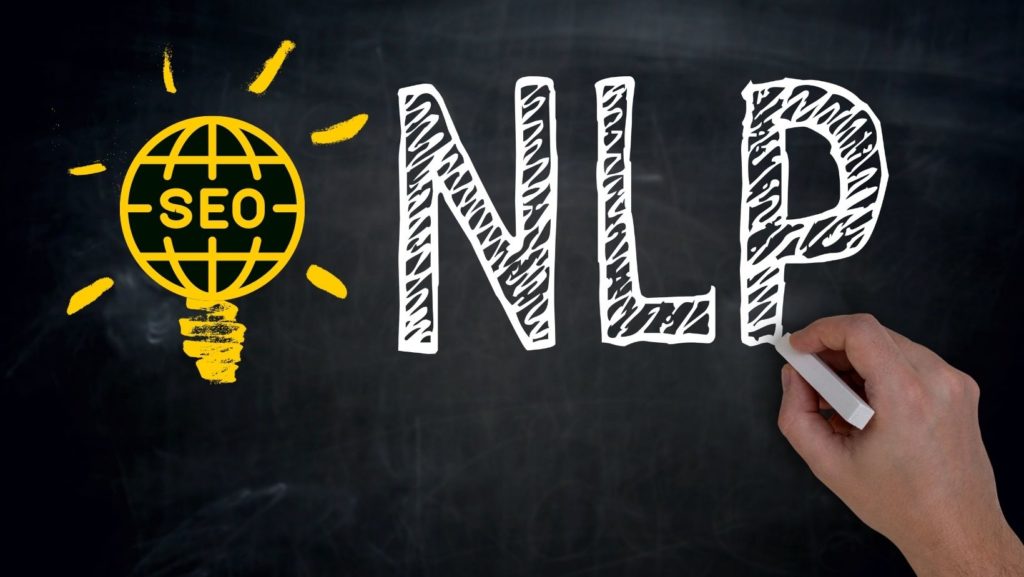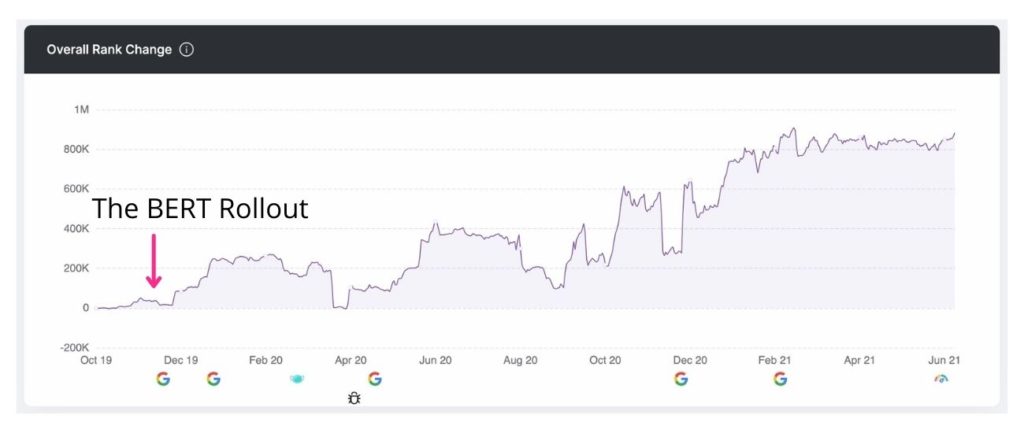Understanding Google NLP Algorithms for Better Content: NLP meaning in SEO, BERT vs. SMITH, and More
Natural Language Processing, or NLP, is one of the most complex and innovative advances in artificial intelligence (AI) and search engine algorithms. Unsurprisingly, Google has become a […]
Natural Language Processing, or NLP, is one of the most complex and innovative advances in artificial intelligence (AI) and search engine algorithms. Unsurprisingly, Google has become a leader in the NLP space. With the release of the SMITH algorithm and their previous natural language algorithm, BERT, Google has developed AI that understands human language proficiently. This technology can be used in AI-generated content creation.
With exceptional accuracy, Google’s NLP models have changed the entire AI game. So, what does this mean for search engine optimization? How do we unpack the meaning of NLP in SEO? Our article will dive into all the details of Google’s NLP technologies and how you can use them to rank better in search engine results pages (SERPs).
What Is Natural Language Processing?
Natural language processing is a field of computer science and artificial intelligence that involves the study of how to make computers understand human language. Unlike previous forms of AI, NLP uses a type of machine learning called “deep learning.”
NLP is considered an important component of artificial intelligence because it enables computers to interact with humans in a way that feels more natural. While NLP may sound like its purpose is to improve Google’s search results and put writers out of business, this technology is actually used in a wide variety of ways beyond SEO.
Here are the most common ways NLP meaning in SEO is used:
- Sentiment analysis: This NLP gauges people’s emotional levels to determine things such as customer satisfaction.
- Chatbots: These are the chat screens that pop up on help pages or general websites. They essentially have a knack for reducing the workload on customer support centers by acting as virtual assistants.
- Auto-correct: NLP that goes beyond spellcheck by looking at grammar using a syntax analysis, understanding common sayings, and more. Thanks to syntax analysis, programs like Grammarly can let you know if a sentence doesn’t make sense or even give you a suggestion for a sentence that is worded better.
- Speech recognition: This NLP takes audio and translates it into commands and more.
- Text classification, extraction, and summarization: These forms of NLP can analyze text and reformat it to be easier for humans to use, analyze, and understand. Text extraction can be quite helpful in tasks such as medical coding and catching errors in billing.
What Is Deep Learning?
Deep learning is a category of machine learning that’s modeled on the neural networks in the human brain. This form of machine learning is typically considered more sophisticated than most AI learning models because of its information retrieval process.
It mirrors the human brain, so it can also mirror human behavior—and learn a lot! Most of the time, deep learning algorithms use a two-part system. One system makes predictions, while the other refines the results.
Deep learning has been used in household devices, public environments, and the workplace for some time. The most common applications include:
- Self-driving cars
- Voice remotes
- Credit card fraud detection
- Medical devices
- Satellite-based national defense
How Does NLP Affect SEO?
A few updates to Google’s PageRank have disrupted SEO standards, such as the Natural Language Processing bots. With the rollout of Google’s SMITH, we saw SEO specialists scrambling to understand how the algorithm works, as well as how to produce content that meets its standards. But like most updates, time often unveils how to meet and exceed content standards to make sure your content actually has the best chance of making it into the search engine results pages.
Essentially, Google NLP for SEO provides searchers with better search results based on their intent and a clearer understanding of a site’s content. This means that only those sites providing the best content held their standings in the SERPs. Any miscellaneous content that doesn’t contribute to user intent gets buried on a deeper SERP or won’t show up at all.
What Is Google BERT?
The BERT (Bidirectional Encoder Representations from Transformers) algorithm was rolled out in 2019 and made waves as the biggest change since PageRank. This algorithm is an NLP that works to understand text and provide superior search results.
More specifically, it is a neural network that is designed to better understand the context of words in a sentence. The model learns the relationships between words in a sentence by using a technique called “pretraining.”
The overarching goal for NLP meaning in SEO is to improve the accuracy of natural language processing tasks, such as machine translation and question answering.
How does the Google BERT algorithm work?
The algorithm achieves its goal by using a technique called transfer learning. This technique improves the accuracy of a neural network by using a pre-trained network that is already trained on a large database.
Unlike many of Google’s updates, BERT’s inner workings are open-sourced. It’s based on a paper published by Google in 2018. This open-source explanation states that the algorithm uses a bidirectional contextual model to better understand the meaning of individual words or phrases for finely tuned content classification.
For example:
Let’s say you’re looking for a bar for happy hour rather than a bar for your bench press equipment. Google will show you the correct kind of bar based on how the word is used in context within a page.
What Else Makes BERT Different?
BERT used cloud Tensor Processing Units (TPUs), which accelerated the NLP’s ability to learn from existing samples of text as its pretraining system. By using cloud TPUs, the model was able to process data fast—we’re talking super fast. The Google Cloud was also tested.
After millions of training sessions, it can now achieve higher accuracy than previous natural language processing models because it’s better at gauging relevance and understanding the context of words in a sentence. BERT used millions, even billions of samples, to fully grasp NLP meaning in SEO and syntax (and not just in English!).
How Did Google’s BERT Update Affect Websites?
The impact was two-fold. First, the update improved the accuracy and relevance of Google’s search engine results pages. Web pages that ranked higher on Google search results experienced an even higher click-through rate (CTR) and more visibility.
Second, the update increased the importance of website content. Web pages with high-quality, relevant content are more likely to rank higher in Google search engine results pages, which overall improves user experience.
What Are Google BERT’s Limitations?
BERT is a powerful tool, but there are some limitations to its capabilities. While it’s easy to get carried away with how neat this NLP model is, it isn’t capable of all human cognitive processes or language models. And these can include limitations in its capability to understand content and speech.
BERT Is a Text-Only Algorithm
First, BERT is only effective for natural language processing tasks that involve text. It can’t be used for tasks that involve images or other forms of data. But BERT can read your alt tags, which does help you appear in Google image searches.
BERT Doesn’t Understand the “Whole Picture”
Second, it doesn’t work for tasks that require an extremely high degree of understanding. Essentially, it’s a pro at understanding words within sentences, but it’s not capable of understanding entire articles when it comes to NLP meaning in SEO.
For example, it might understand that the “bat” in the following sentence refers to a mammal rather than a wooden baseball bat: “The bat devoured the mosquito.” While it understands the concept of “bat,” in particular this part of speech, it’s not effective for tasks that require the understanding of more complex sentences or information.
What Is the Google SMITH Algorithm?
Google SMITH (or Siamese Multi-depth Transformer-Based Hierarchical) is a ranking algorithm designed by Google engineers. It examines natural language and linguistics, learns patterns of meaning in relation to phrases and their distance from one another, and then creates a hierarchy of information that allows pages to be indexed more accurately.
This allows SMITH to perform content categorization more efficiently.
Another interesting feature of SMITH is that it functions as a text predictor. Other companies have been making big waves with NLP (like Open AI’s infamous GPT-3). Some of these technologies could help others build their own search engines.
How Will Google’s SMITH Update Affect Websites?
SMITH will have a significant impact on content analysis. The model is designed to improve the accuracy of search results, and it does this by penalizing websites that are using manipulative techniques. SMITH is designed to raise the bar for quality content and organic link-building.
Some of the most common manipulative techniques that are targeted by SMITH include:
- Spammy links
- Black hat search engine optimization
- Artificial intelligence
- Keyword stuffing
- Link buying
- Excessive use of anchor text
Websites using these techniques will likely be penalized by Google, which will result in a decrease in their search ranking.
What Is the Difference Between Google’s SMITH Update vs. Google BERT?
Both the BERT model and SMITH model provide Google’s web crawlers with better language understanding and page indexing. To truly grasp NLP’s meaning in SEO and differentiate the two updates, we have first to acknowledge the fact that Google likes long-form content. When SMITH is live, Google will understand longer content on the internet even more effectively. SMITH will improve the areas of news recommendations, related article recommendations, and document clustering thanks to its information retrieval process.
How To Adjust Your SEO Strategy for Google NLP Updates
While Google claims you cannot optimize for BERT or SMITH, understanding how to optimize for NLP can make an impact on your site’s performance in the SERPs. Knowing that these models focus on user intent means that you should understand the intent of any search query you want to optimize to reach your target audience better.
Google is often a bit cagey about when they roll out their updates, and they continue to be secretive about when SMITH will fully roll out. But to our knowledge, it’s usually best to assume they have started to optimize for all kinds of related changes.
SMITH is likely just one of many iterations in Google’s long-term goal of maintaining their dominance in NLP and machine learning technology. As Google improves its understanding of complete documents, good information architecture will be even more important.
How Can You Optimize Your Content for Google’s NLP Algorithms?
Now that you truly understand NLP meaning in SEO, it’s time to go over a few key tips to optimize your content strategy:
- Make sure your content is well-formatted and easy to read. Maintain heading best practices and other readability best practices. These include:
- Keep your sentences under 20 words.
- Use bullet point lists for listed items greater than two.
- Use the correct heading hierarchy.
- Avoid presenting readers with an impenetrable block of text.
- Use active voice rather than passive voice.
- Use clear, concise language that’s easy to understand. Don’t overly complicate your sentence structure.
- Avoid using complex or difficult words that may confuse search engines and users. Ditch the thesaurus and keep your sentences straightforward. Remember that the shortest way to something is often the best.
- Use long tail keywords and focus terms that are relevant to your topic or have semantic similarity. Semantic search terms can actually help Google natural language processors understand the entirety of your page better.
- Make sure your content is fresh and up to date. Remember that the motivation of these NLP models is to improve search engine results pages while weeding out spammy, outdated content.
- Write interesting and engaging content that people actually want to read. Providing searchers with the best content for their needs is never a bad idea. Keep in mind search intent and topical depth.
- Customer opinions and reviews matter! Google’s NLP can likely perform entity sentiment analysis and understand tone, so don’t ignore bad reviews. If you receive negative reviews (whether they’re in the English language or Martian), you can bet that Google’s entity sentiment analysis will push you down the SERPs.
- Provide clear answers to searchers’ questions. If you want to wind up in a featured snippet, Google’s NLP meaning in SEO will only get you there through text extraction using entity analysis. This means that Google has the ability to hone in on specific information to display to users.
The Future of Google NLPs
So, what is NLP in SEO going to look like in the future? Well, Google Natural Language API and Cloud TPU are now available for everyone to use. So, if you could use a deep learning machine learning platform to perform NLP tasks, you can use Google’s natural language APIs. You can even participate in training Google Cloud NLPs if you want! This is just a small glimpse of how this technology can transform the way we approach search engine optimization.
Optimize for Google Natural Language API and Get Results
One thing is clear: natural language APIs are here to stay. As we can see from the progression between BERT and SMITH, Google Search updates will only continue to understand your content better and serve it to the right audience based on relevance.
Focus on content and focus on quality. While learning and experimenting to find out what works best for Google’s NLPs, always stick to best practices for search engine optimization. Keep in mind that your writing will affect your ranking. And thanks to sentiment analysis, what your customers and visitors write will affect your ranking, too. You can learn more about BERT here.
You can also check out Search Atlas’s AI Content Generation tool, which is built on Google’s Natural Language API. It’s a great way to produce the highest-quality content with reduced effort. By embracing these tools that understand language nuances and context, you can elevate your content strategy for the long term.





















































































